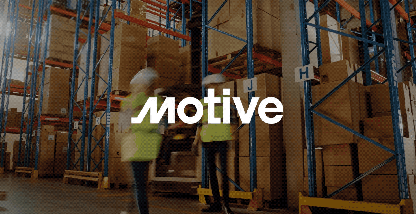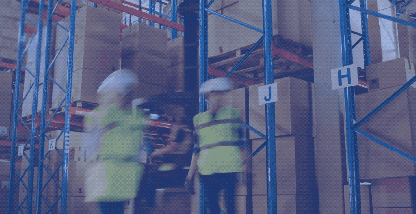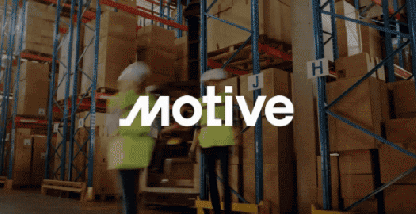Editor’s note: This is part three of a three-part series on supply chain challenges. Part one looks at challenges taking place at the Port of Long Beach. Part two explores challenges that truckers are facing and supply chain impacts in construction and oil and gas. Part three looks at the challenges that rail operators are confronting in rail yards around the country.
Over the last 12 months, supply chain challenges in the United States have escalated to unprecedented levels. Warehouses are full, new stock is arriving, and there’s nowhere to put it. At intermodal terminals on the coasts and inland, a shortage of chassis is making it difficult to move shipping containers.
As a result, warehouse managers have no choice but to stack containers in open areas at the terminal. And that’s where these containers stay, for days at a time, until a drayage driver comes along to collect one. It’s at the bottom of a stack five containers high, and it’ll take time to move and load it.
This is the broken supply chain world we’re living in. With Christmas around the corner, the movement of goods throughout the U.S. has stagnated, and it’s anybody’s guess when the bottleneck will clear.
For insight into how supply chain challenges are playing out in America’s rail yards, we spoke with Gerry Bisaillon, a veteran of the railroad industry. Bisaillon currently works as Senior Vice President Optimization, Design, and Consulting at Remprex, a company that specializes in the gate automation, lift operation, facility design, and engineering of intermodal terminals and ports.
Before arriving at Remprex, Bisaillon worked for Union Pacific Railroad for 20 years, overseeing the intermodal railcar fleet and managing terminal design, among other responsibilities.
As one familiar with railroad operations and supply chain challenges, we asked Bisaillon what is responsible for the congestion at intermodal terminals across the country and what can be done about it. Here’s his take on it all.
What’s driving supply chain challenges at the railroads
“When terminals are congested, there are reasons for that,” Bisaillon says. “There are issues in every leg of the supply chain. The flow of freight is not picking up as quickly as one would like. With 100 ships at anchor in the ports of Los Angeles and Long Beach, it’s an enormous number. I don’t think anyone has ever seen that before.”
Additionally, a lack of railroad workers is contributing to gridlock at U.S. rail terminals, causing delays in the transport of chemicals, fertilizers, and other products. Shippers and trade groups say the disruption threatens factory operations and could slow the pandemic’s recovery.
Precision-scheduled railroading makes service more consistent, but not in a supply chain crisis
The construction and trucking industries are also dealing with labor shortages that have resulted from layoffs, retirements, and people reevaluating their priorities during the pandemic.
The number of rail workers has drawn down gradually over the last several years not only as a result of the pandemic but also as a result of precision-scheduled railroading.
PSR, as it’s called, is a strategy introduced by the Class 1 railroads to drive more efficient operations. Its key tenet is for freight trains, much like passenger trains, to operate on fixed schedules.
In precision-scheduled railroading, inventories on freight cars are reduced as railroads use fewer trains, often at fewer terminals. PSR is meant to benefit customers by providing consistent, predictable, and reliable service, and during normal times, it does. But a pandemic-generated supply chain crisis doesn’t make for normal times.
“Precision-scheduled railroading entails squeezing buffers to get extra capacity out of the rail system and to run more efficiently,” Bisaillon says. “It means rail operators cannot handle fluctuations or surges in the supply chain very well. There is no quick availability of extra assets, such as railcars or locomotives, to handle extra volumes. If you do not get the equipment in the right place at the right time, you get out of sync with the shipping cycle. The unintended consequence of a PSR network is to remove the resiliency needed to adjust to variations in the supply chain. You need room to adjust to variations in supply and demand. Right now, there isn’t any room.”
Container pileups are slowing operations at U.S. rail depots just as they are at the ports
The inability of the rails to adjust to variables in supply and demand has compounded supply chain fragmentation. As U.S. ports are struggling with a backup of containers stacked on their grounds, rail depots are wrestling with the very same problem.
In September, Bloomberg news reported that “the so-called dwell time for containers at 11 major railroad depots reached an average of 9.8 days.” That was up from 6.7 days in May 2021 and 5.9 days in February 2021.
The data originated with Hapag-Lloyd AG, the world’s fifth-largest container carrier, after a tally of its own boxes. The most severe backups were in Los Angeles, where containers waited an average of 16 days to be picked up, and in Charleston, South Carolina and Detroit, Michigan, where containers waited an average of 13 days to be carted away.
According to The Washington Post, the median cost of shipping a standard rectangular metal container from China to the West Coast in October reached a record $20,586, nearly double what it cost in July, and that was double what it cost in January 2020.
The shortage of chassis that is complicating life for U.S. motor carriers and drivers is also hurting the depots’ ability to move containers through intermodal facilities.
According to an article from Atlanta-based Green Worldwide Shipping, the lack of chassis in major cities across the country has prevented the delivery of goods.
Elise Gosch, Union Pacific’s AVP of Marketing and Sales for Premium Intermodal, noted in a recent editorial: “The average time a chassis is on the streets before it returns to an intermodal ramp has elongated by 20% versus the same time last year. That’s a huge reduction in asset productivity and it drives an imbalance in the overall supply chain.”
“When we ground a container in an intermodal facility, that’s how you know the chassis shortage is systemic,” Bisaillon says. “There are no chassis available on terminal to unload the train. It will take time to get the cycle running smoothly again.”
In Chicago, the busiest rail hub in the nation, freight railroads are playing catchup as containers arrive faster than they can be switched for transport elsewhere. Without chassis to move them, container stacks at the region’s yards have grown ever-taller. Labor and equipment shortages in the shipping, trucking, and rail industries are only compounding logistical challenges.
Rail operators are taking action to improve supply chain disruptions
Intermodal operators are doing all they can to create space in rail yards and keep shipments moving. The Association of American Railroads (AAR) has outlined several steps the Class 1 railroads have taken to ease supply chain challenges. Among them, coordination is being increased across railroads in busy rail hubs to manage traffic.
Railroads also are managing the flow of intermodal containers into Chicago, where over the summer, railroads temporarily suspended service from the West Coast to ease the backlog.
The Class 1 railroads also are reopening previously shuttered terminals to increase throughput capacity, and they’re increasing storage capacity. It’s all part of an effort to offload intermodal containers and keep trains moving.
According to the Seatrade Maritime News, the Georgia Ports Authority recently completed nine new sets of rail tracks at the Mason Mega Rail Terminal, increasing rail capacity to and from the Port of Savannah by 30%.
The additional rail capacity and new container storage on and off the terminal are beginning to help alleviate some of the supply chain challenges for Georgia and by extension, the rest of the country.
As an imbalance in the supply chain disrupts the flow of equipment and goods at the height of the holiday season, the upside, Bisaillon says, is that the railroad community is uniting to improve communication and further enhance industry standards for safety.
Organizations such as the Association of American Railroads (AAR) and the Intermodal Association of North America (IANA) are part of an effort to improve standards and integrate technologies.
“The sharing of information through technology is going to be the next step, the next functional improvement that we as an industry can bring to intermodalism,” Bisaillon says. “It’s really about sharing advanced movement instructions about containers. If you are the driver responsible for the last mile delivery, for example, it would be good to know when the container is loaded in Asia and approximately when it will arrive in the terminal in Columbus, Ohio.”
If terminal operators could predict when a ship is going to arrive at a terminal and which destination the container is destined for, then they could plan to have the right number of rail cars there when the ship arrives, Bisaillon adds. “If you have a longer-term vision of when the demand will be there, you have a better chance of putting assets in the right place at the right time. What is the right platform to put that plan into motion? That’s a philosophical discussion that needs to occur, but information sharing is really going to improve the efficiency of the supply chain.”







